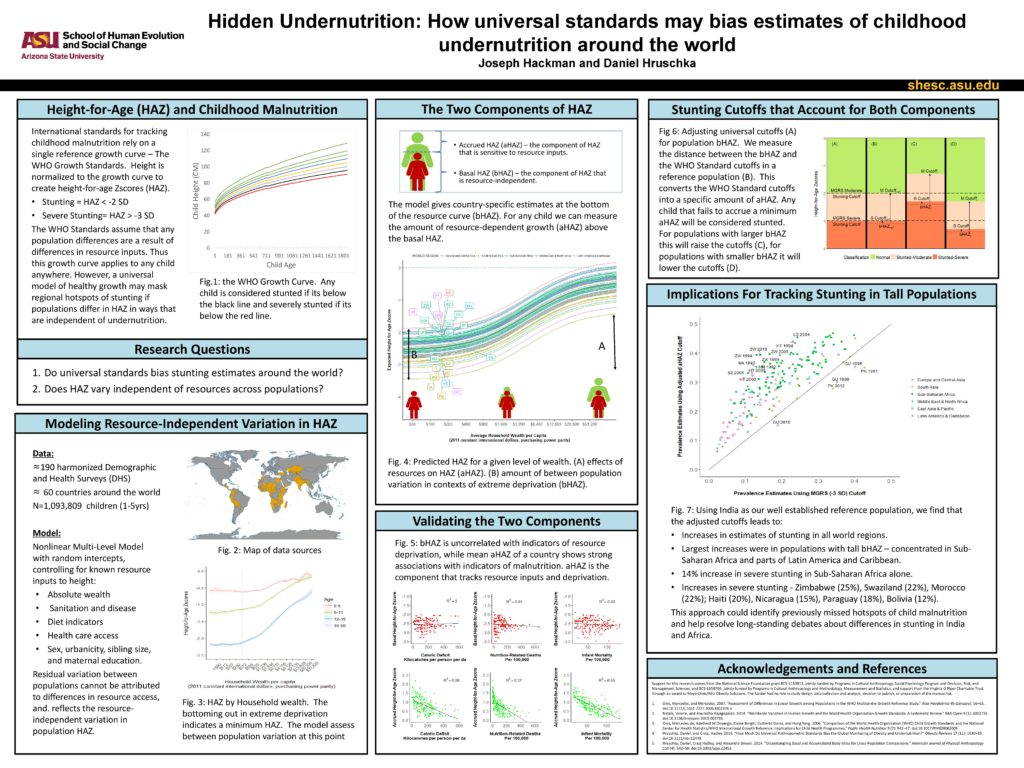
Height and weight are sensitive indicators of child well-being and disease risk. However, applying a one-size-fit-all standard for healthy growth can miss deprived children who are naturally tall. Our group is developing context-sensitive measures of child growth that capture poor growth in all populations.
Relevant Publications
- Hackman J*, Hruschka DJ (2020). Disentangling basal and accrued height-for-age for cross-population comparisons. American Journal of Physical Anthropology. 23990
- Hadley CM, Hruschka DJ (2017). Testing Ecological and Universal Models of Body Shape and Child Health Using a Global Sample of Infants and Young Children. Annals of Human Biology. 44 (7), 600-606.
- Hruschka DJ, Hadley C (2016). How much do universal anthropometric standards bias the global monitoring of obesity and undernutrition? Obesity Reviews. 17 (11), 1030-1039.
- Hruschka DJ, Hadley C (2018). Nutrition and Growth. Ed. W. Trevathan. International Encyclopedia of Biological Anthropology. John Wiley & Sons, Inc. pp. 1-5
- Hadley C, Hruschka DJ (2014) Population level differences in adult body mass emerge in infancy and early childhood: Evidence from a global sample of low and lower-income countries. American Journal of Physical Anthropology. 154:2, 232-238.